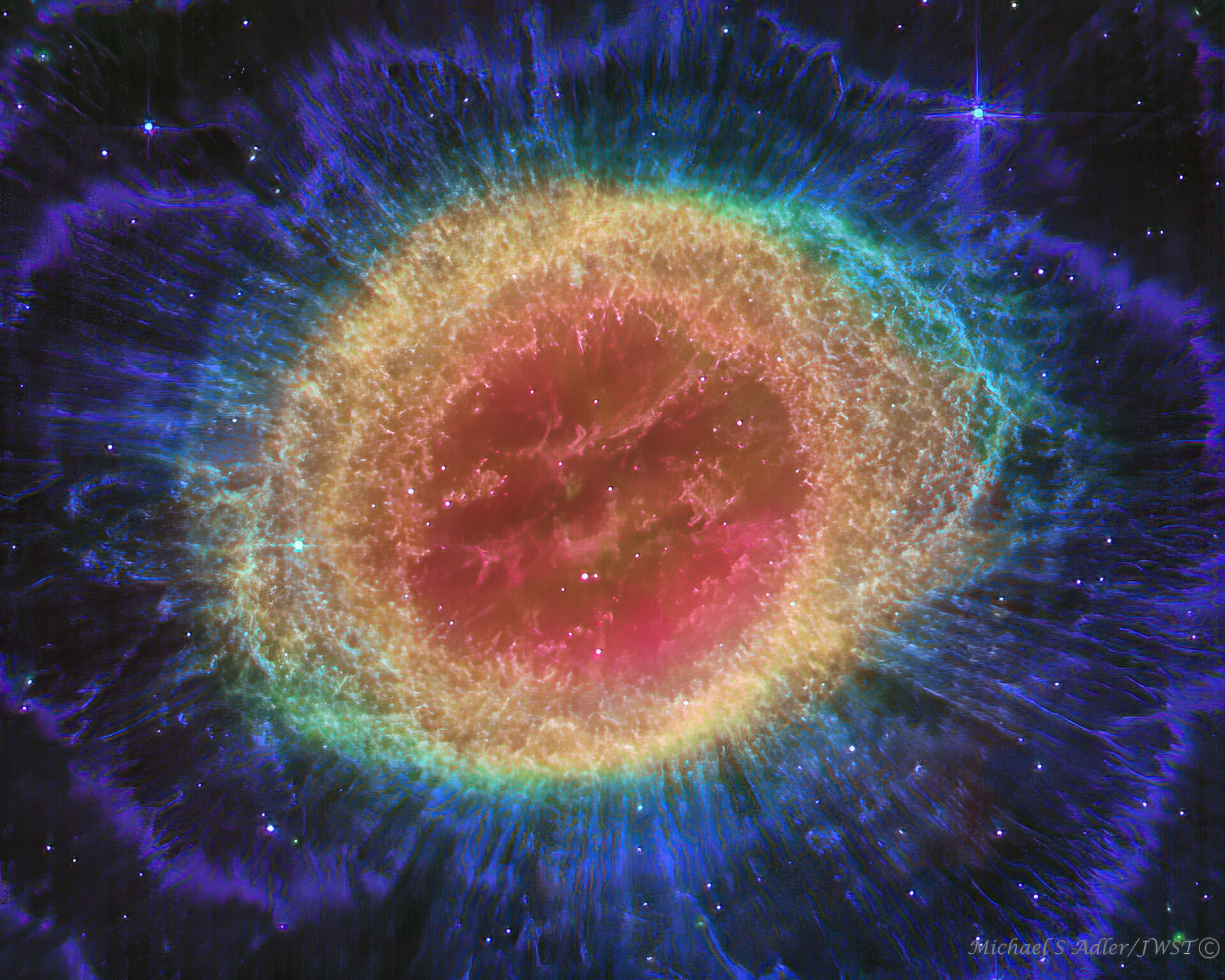Optics: James Webb Space Telescope(JWST)
Mount: JWST
Camera:MIRI(JWST Mid Infrared Camera)
Filters: 2500w, 1800W, 1130W, 560W
Dates/Times: July, August 2022
Location: Lagrange Point 2 orbit, ~1 million miles from Earth
Exposure Details: Nine near infrared filters on the JWST NIRCAM ranging from 560nm to 2500nm
Acquisition: Downloeaded from the ESA JWST Science Archive
Processing: Maximdl was used to stretch and align the data from the four filters and create a three wavelength color image from the 25.0um(Red), 11.30um(Green), 5.60um(Blue) filters. BlurX in Pixinsight, Photoshop 2023 was used to add in Yellow/Orange using the 18.0um filter data, PS Camera Raw & Topaz GigaPixel AI was used to finish processing this image.
Messier 57, Ring Nebula, JWST(MIRI)
Original price was: $65.00.$52.50Current price is: $52.50.
Messier 57 Ring Nebula, JWST
It was noticed hundreds of years ago by stargazers who could not understand its unusual shape. It looked like a ring on the sky. Except for the rings of Saturn, the Ring Nebula (M57) may be the most famous celestial circle. This new image provides unprecedented spatial resolution and spectral sensitivity. In particular, Webb’s MIRI (Mid-InfraRed Instrument) reveals particular details in the concentric features in the outer regions of the nebulae’s ring.
There are some 20,000 dense globules in the nebula, which are rich in molecular hydrogen. In contrast, the inner region shows very hot gas. The main shell contains a thin ring of enhanced emission from carbon-based molecules known as polycyclic aromatic hydrocarbons (PAHs). Roughly ten concentric arcs located just beyond the outer edge of the main ring. The arcs are thought to originate from the interaction of the central star with a low-mass companion orbiting at a distance comparable to that between the Earth and Pluto. In this way, nebulae like the Ring Nebula reveal a kind of astronomical archaeology, as astronomers study the nebula to learn about the star that created it.
We now know what it is, and that its iconic shape is due to our lucky perspective. The recent mapping of the expanding nebula’s 3-D structure, based in part on this clear JWST Miri image,indicates that the nebula is a relatively dense, donut-like ring wrapped around the middle of an (American) football shape cloud of glowing gas. Our view from planet Earth looks down the long axis of the football, face-on to the ring. Of course, in this well-studied example of a planetary nebula, the glowing material does not come from planets. Instead, the gaseous shroud represents outer layers expelled from the dying, once Sun-like star, now a tiny pinprick of light seen at the nebula’s center. Intense ultraviolet light from the hot central star ionizes atoms in the gas. The Ring Nebula is about one light year across and 2,500 light-years away. This image has contributions from 4 filters in the mid infrared JWST camera(MIRI). Red come from the 25.0um filter, Green from the 11.3um filter, Blue from the 5.6um filter and Orange/Yellow from the 18.0um filter. The NASA version of this image uses 9 filters.https://stsci-opo.org/STScI-01H82PFHGYX6VBJXTWJJJKV0YJ.png
This image can also be compared with the southern ring nebula also done by the Webb telescope One can see a similiar set of distinct layers of material that ere ejected.https://earthandskyimaging.com/product/ngc-3132-southern-ring-nebula-jwstmiri/


